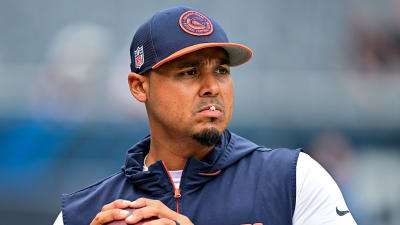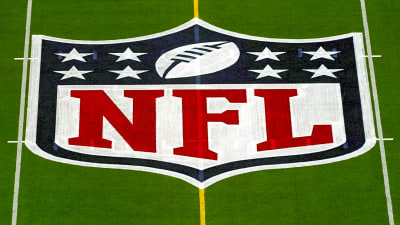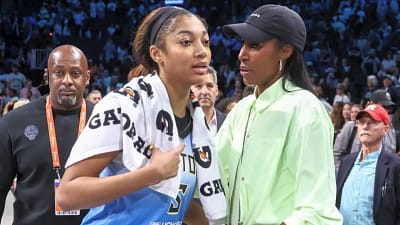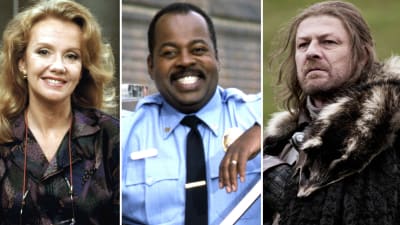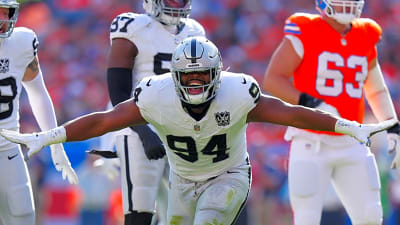WASHINGTON, D.C. — Just after introducing the number one overall pick in the MLB Draft, Eli Willits, as a Washington National, interim GM Mike DeBartolo took some time to recap the draft process and how he plans to handle the upcoming trade deadline.
At 41-61, this season has been a disappointing one for the Nationals’ brass. They seem to have an exciting young core of players developing, but that hasn’t led to winning.
Sitting 14 games out of the final wild card slot with a minus-110 run differential, the Nationals have no choice but to field offers on veterans with expiring deals.
“We have to use the opportunity [the trade deadline] to bolster future Nationals teams,” DeBartolo explained. “To get us into that position of being a competitive team every single year.”
With that being said, it seems unlikely that DeBartolo would pull the string on any major deal. The Nationals are operating with the idea that this team doesn’t need a full tear-down.
“While keeping our young core in place, we’re looking to, you know, add additional talent to the organization,” DeBartolo said. “To improve those future National teams.”
The month of July, DeBartolo’s first month as interim GM, will prove to be a crucial one for those future teams that he referenced. Between managing a large bonus pool for the draft and operating as a seller at the deadline, DeBartolo has that chance to improve this minor league system and make the Nationals organization better.
It’s a weird situation for DeBartolo, given that he may not be in the Nationals’ front office next season. But, for his candidacy in other front offices for a high-ranking position, it’s mutually beneficial for him and the Nationals for him to nail this draft and trade deadline.
“My goal in this role, whether it’s interim or otherwise, is to build a competitive team,” DeBartolo explained. “Whatever we can do to bolster the future outlook of the Nationals and get in the playoff race as soon as we can, that’s where I’m focused.”
Reflecting on the Draft
The Nationals drafted Willits with the number one overall pick, which was a surprise to some. Many thought fourth-overall pick Ethan Holliday was the best prospect.
However, Willits signed for $8.2 million, nearly $3 million less than the slot value for the number one selection. It became clear that the Nationals were hoping to allocate more money into some later-round, above-slot picks.
Despite saving money with the top pick, DeBartolo insists Willits was their guy – regardless of the bonus pool.
“When you get the number one player that you want, but then you still have the opportunity to add additional talent later in the draft – [it’s] just a way to bolster what we have in the organization and put future Nationals teams in a better position,” DeBartolo explained.
Since they saved money with Willits, the Nationals took some swings on a few high school arms that are unsigned, but would likely earn above-slot deals.
Third-rounder Landon Harmon (Mississippi State commit), fourth-rounder Miguel Sime Jr. (LSU commit), and 19th-rounder Mason Pike (Oregon State commit) are all pitchers who were rated higher than where they ended up being selected.
Since the Nats saved so much of their bonus pool money with Willits, they could entice these high schoolers to sign by paying them like a higher draft pick.
“That’s where the opportunities were, quite honestly,” said DeBartolo, on drafting high school arms with his bonus pool savings. “Some of these high school players where we do have to pay them above slot, we just executed that strategy as best as we could.”
The Plan for Eli Willits
Willits has put the pen to paper and is officially a National. Now, he’s already off to the club’s spring training facility in West Palm Beach, Florida. At just 17 years old, the Nationals want to make sure Willits is comfortable and 100% ready to go before putting him in games.
“He’ll take the next couple weeks and just get familiar with the staff and get reps in,” DeBartolo said. “We’ll see how those few weeks go, and then just take it from there.”
Despite playing it slow with Willits and not putting him into games immediately, it’s clear that DeBartolo views him as the team’s long-term solution at shortstop.
“Our scouting evaluations were all surefire shortstop,” DeBartolo explained. “He’s got all the tools, and he just made it look easy out there. It was very impressive to see, so we have every confidence he’s going to be a shortstop.”
Drafting players as shortstops has become commonplace at the top of drafts for all organizations. The Nationals’ first-round pick last year, Seaver King, is also a shortstop. Currently, they possess a pretty good offensive shortstop in C.J. Abrams at the major league level as well. Why so many shortstops?
“You can never have enough up-the-middle, quality players,” DeBartolo added. “That’s often where the most talented players are, and you just try to have as many of them as you can.”
Even though Willits has some competition, if he proves to be the best all-around player, they will move the other pieces to ensure they put their best at shortstop.
Looking to the Trade Deadline
Given that they have fallen out of playoff contention, the Nationals now must look to the future. Even though they believe in their young core, players on expiring contracts won’t be there to help next season.
Starting pitcher Mike Soroka, relievers Kyle Finnegan and Andrew Chafin, infielders Amed Rosario and Paul DeJong, and designated hitter Josh Bell could all be moved as rentals.
While some of those players could help a contending team, they certainly wouldn’t bring the same haul that trading a controllable arm like MacKenzie Gore would. Would DeBartolo consider a huge move like that?
“I’m looking to keep that young, core group of our best players together,” DeBartolo explained. “If someone calls, you always listen to whatever someone has to say. But, trading away our really high-quality young players is not something I’m looking to do right now.”
When referencing who that young core consists of, DeBartolo mentioned Gore, Abrams, James Wood, and Dylan Crews. Given that they are all young, cheap, controllable, and talented, it makes sense that the Nationals aren’t actively looking to move them.
“We’re looking to just acquire young talent and just to bolster what we have,” DeBartolo said. “Be competitive as soon as we possibly can, but I don’t want to put a timeline on it.”
The organization will review their talent evaluations and identify which young players from interested teams they like the most. Then, DeBartolo will attempt to acquire them in exchange for those rentals.
It’s a tricky situation for DeBartolo, as stated previously, because there’s a chance that the Nationals’ front office will be revamped this offseason. He may have nothing to do with the organization after this year.
If the trades that he negotiates work out positively for Washington, that could elevate DeBartolo’s status as a potential future general manager elsewhere. He has a chance to make lasting impact on the franchise in a small window.
More must-reads:
- Top moments from 2025 Baseball Hall of Fame inductions
- All signs point to Yankees moving on from Anthony Volpe
- The 'MLB mascot names' quiz
Breaking News
Trending News
Customize Your Newsletter
 +
+
Get the latest news and rumors, customized to your favorite sports and teams. Emailed daily. Always free!
